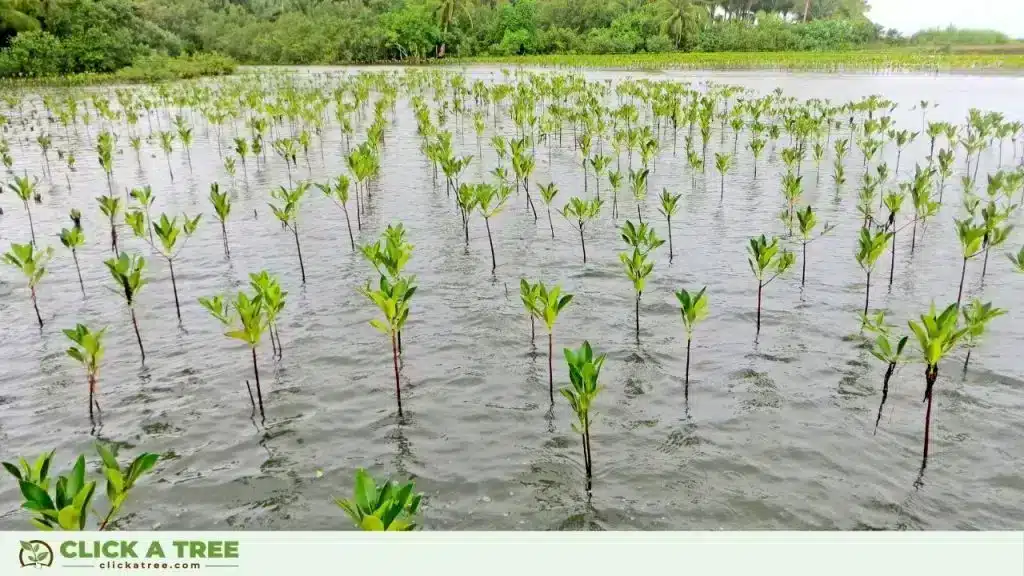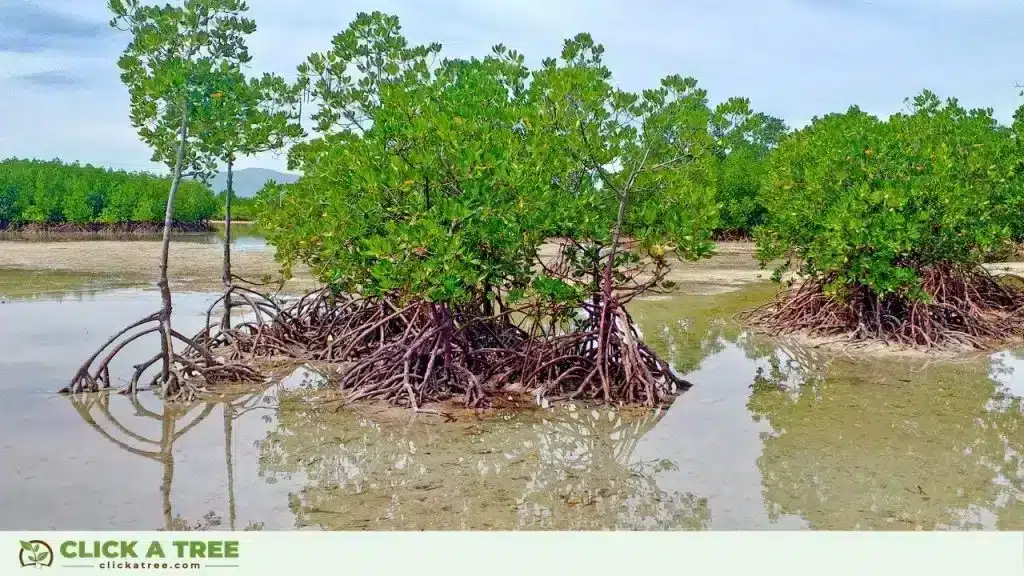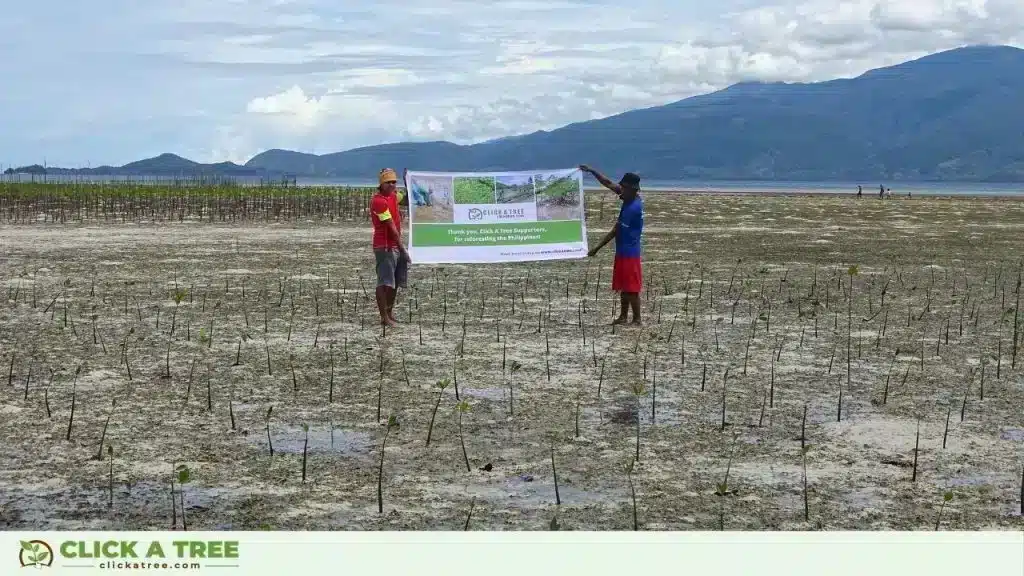Planting trees in the Philippines
Why we plant trees for the oceans
- AutorIn: Chris Kaiser
- Datum:
- Kategorie: Hacks, tips, knowledge
Share with your community on LinkedIn now:
We spread our wings, or rather our fins! We are very happy to tell you about our tree planting project in the Philippines. Can you guess which trees we are planting there? These highly effective trees help to protect turtles and combat climate change at the same time.
What other underwater animals need these trees to survive? Did you know that the very same trees can prevent entire countries from sinking? And which tree is the most effective in the fight against climate change?
Find out everything you need to know about planting Philippine-style trees here.
Where exactly do we plant in the Philippines?
Country profile
Let’s start with the basics of this wonderful island nation.
The Republic of the Philippines is an archipelago of more than 7,000 islands, of which only around 2,000 are inhabited. In the western Pacific, more than 100 million people live in the Philippines (with a population density of around 370 per square kilometer – pretty much like Belgium).
It’s a popular vacation destination – and it’s easy to understand why. Dramatic limestone cliffs, clear blue waters (with beautiful marine life), diverse hiking trails and white sandy beaches give these tropical islands a truly unique feel.
However, according to the United Nations Human Development Index, the Philippines is at a low level of 106. In comparison, Germany ranks 5th. Outside the modern metropolis of Manila, many smaller settlements and communities still need a stable, reliable and secure income. Even in the big city of Manila, a stable income is not guaranteed.
Especially as the Philippines are located on the Pacific Ring of Fire and are therefore particularly susceptible to earthquakes and typhoons every year.
Our tree planting site
In the Philippines, we plant the trees on the island of Mindanao, the second largest island in the country. To put this into context, Mindanao is only slightly larger than Portugal or the US state of Indiana.
But of course you want to know where exactly we plant the trees in the Philippines.
That would be in Balete Bay, near Sleeping Dinosaur Island¹. Sounds exotic, doesn’t it? Like so many things in the Philippines, it is naturally green. And in the coming years there will be even more greenery and wildlife thanks to the planting of trees.
Have we convinced you yet? Then plant mangrove trees now!
However, if you need a little more convincing, you’ve come to the right place.
Why are we planting trees in the Philippines?
Our tree planting mission
This is quite simple: the Philippines is one of the most deforested countries in the tropics. There has been an eye-watering amount of deforestation and something needs to be done to reverse this.
As a result of deforestation, there are increasing problems with soil erosion, crop quality, landslides and the management of water catchment areas.
Trees are being removed to improve the quality of the beach and to build tourist-oriented resorts. However, trees are also removed because they are not compatible with the many shrimp farms in operation (harmful chemicals are used in the farm waters). Swamps are also being drained, which means that mangrove trees are being removed to make room for human settlement.
All of this has an impact on human life. But the good news is that planting trees can help fix everything!
By planting trees in the Philippines, you are helping to restore native tree species. These trees store large amounts of carbon (more on this later), provide reliable labor and support all kinds of healthy ecosystems.
As always, when we plant trees, we do not use volunteers. We employ locals and reward their hard work with a fair salary. They can reinvest their income locally and their skills are developed within the community in the long term.
Why trees for the oceans?
Reforestation in the Philippines is also hugely important for wildlife.
For example, there are more than a hundred mammals and over 170 bird species in the Philippines that cannot be found anywhere else in the world. Isn’t it worth protecting that?
But there is also a rich and diverse marine life, and we must do all we can to plant trees for the oceans and protect the future of Philippine marine life.
We also plant mangrove trees. Mangrove trees bring all sorts of benefits, but you’ll be surprised how much marine life depends on them.
Mangrove roots grow under water and form a labyrinth of roots and branches. This complex, tangled area creates a safe space for underwater life, including many species of fish, crabs, shrimps and other crustaceans.
The water surrounding the roots is rich in nutrients and safe for young animals. Milkfish and shrimps, for example, spend their young lives here, protected from predators.
Related articles: 15 Good Things That Happened in 2020 – A Click A Tree Year in Review
Which trees do we plant in the Philippines?
Now it’s time to tell you all about mangrove trees and why we are reforesting the Philippines with them.
In our article on the different ways organizations plant trees, we explain the differences between planting monocultures and planting diverse forests that best represent nature.
Our tree planting in the Philippines aims to build a natural forest that has the best chance of survival. To this end, we plant trees that are suitable for the humid, green and coastal areas – mangrove trees.
Planting mangrove trees in the Philippines means that the entire ecosystem benefits. They are native to the country and support a huge ecosystem around them.
But it gets even better.
Why mangrove trees are great
Our mangrove trees have an incredible survival rate of 93%. That’s great! This results in a super-efficient system in which we can plant as many trees as possible and watch them thrive.
And they could thrive for up to 120 years. Mangrove trees use “natural regeneration”, which means that a tree planted today will be worth several trees in 20 years.
If we do it right, mangrove forests will thrive far beyond our lifetimes.
As we can also plant 8,000 mangrove trees per hectare, they are the perfect tree to plant in the Philippines.
It is also very practical that mangrove trees are among the most valuable carbon binders on our planet.
We have kept our calculations conservative. But the average mangrove tree absorbs around 300 kg of CO2 over 25 years. After that, they take up 25 kg per year – and that doesn’t even take into account all the baby mangrove trees that join the party over the years.
Only a third of the carbon they absorb is stored in the tree itself. The rest is stored in the roots and in the sludge between the roots.
Would you like to see mangrove trees in action? Watch this video to see how mangrove trees protect the coast:
So what are you waiting for? Plant the best possible tree to combat climate change today.
Let’s reforest as much land as possible
What have we learned about planting Click A Tree trees in the Philippines?
Creating reliable work and protecting endangered Philippine land? Check.
Support life on land and under water? Check.
Storing large amounts of carbon in an incredibly efficient tree planting model? Check!
To top it all off, we have committed to removing 1 kg of plastic from the ocean for every mangrove tree we plant, starting with the planting of 5,000 trees.
Now it’s up to you to help us turn this vision into reality.
You have helped us support entrepreneurship schools in Ghana and increase elephant habitat in Thailand. You have created work in Nepal and changed lives in Madagascar.
Isn’t it time you added the Philippines to the growing list of countries where you have planted trees?
Join in with our Instagram events, contribute to our Facebook discussion about tree planting in the Philippines, and tell everybody you know.
Share this post with your colleagues. Email it to your friends. Spice up your LinkedIn feed!
Keep up the great work, and we’ll keep on planting trees. Thanks for being awesome.
Sources
¹https://www.google.com/maps/place/6%C2%B053’17.0%22N+126%C2%B009’52.1%22E/@6.8538814,125.9308073,10.55z/data=!4m5!3m4!1s0x0:0x0!8m2!3d6.8880556!4d126.1644722








